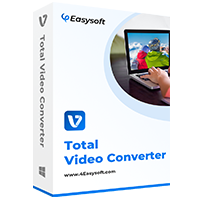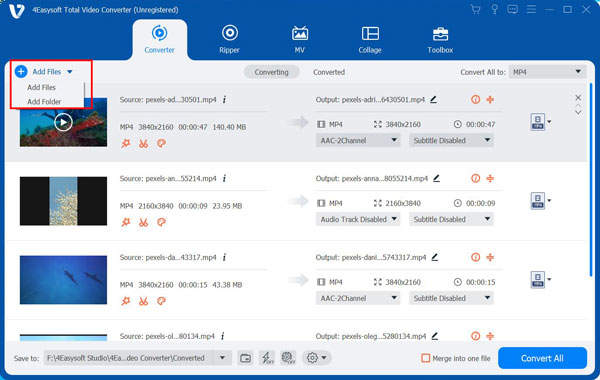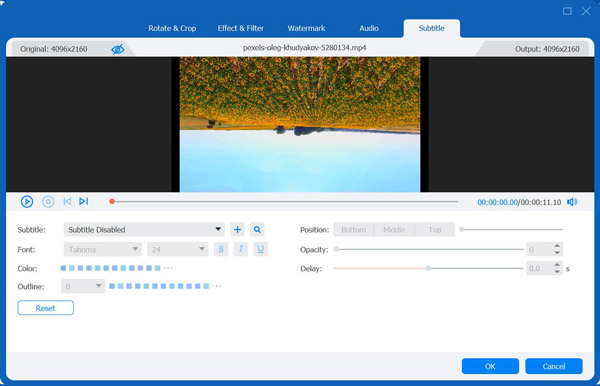Convert, edit, and compress videos/audios in 1000+ formats with high quality.
Closed Captions VS. Subtitles: Knowing Their Differences
Closed Captions vs. Subtitles: which one is better? If you don’t spend much time in the world of video editing, you might not be aware of the difference between subtitles and captions, and you may be asking the same question. While they may seem similar, they serve different purposes, each with unique characteristics and usage. That’s precisely what this post features! So, without further ado, start exploring the comparison between "closed captions vs. subtitles" below.
Guide List
The Definition of Captions and Subtitles Main Difference Between Closed Captions and Subtitles When Should You Use Captions or Subtitles? Bonus Tip: How to Add Multiple Subtitles While Watching a MovieThe Definition of Captions and Subtitles
Before you explore this post’s closed captions vs. subtitles clash of differences, you can first look into their definitions to gain a brief background. Exploring this can also give you hints about their differences, making it easier for you to distinguish between them, their usage, and their purpose. So, what is closed captioning vs. subtitles? Explore their definitions below.
Well, closed captions (CC) are a textual representation of a video’s audio, which includes both spoken dialogue and sounds, such as sound effects, music cues, and speaker identification. They are designed to make content accessible to those individuals who are deaf or have difficulty hearing. For example, aside from the dialogue, captions can display "[laughter]" or "[dramatic music]". With that, the viewer can fully grasp what’s happening in the scene. These closed captions are typically written in the same language as the video’s audio and are precisely timed to synchronize with the spoken dialogue and sounds.
On the other hand, subtitles are designed only to convey the spoken dialogue of a video, usually in text form at the bottom or top of the screen. They are used for videos that are in a foreign language. It helps viewers understand the content of the video by translating the spoken dialogue into their language. Unlike closed captions, subtitles focus solely on transcribing or translating the spoken words in the video, helping to bridge the language gap without altering the original audio.
Main Difference Between Closed Captions and Subtitles
Now that you have explored the brief definition of closed captions and subtitles, it is time for you to explore the closed captions vs. subtitles clash of differences. As you may have noticed earlier, after reading their definitions, closed captions and subtitles offer different uses. Closed captions are designed for people who are deaf or have difficulty hearing. On the other hand, subtitles are primarily used to transcribe and translate the spoken content in a video. Aside from that difference, what are some other key differences between them? Well, here are a few.
Closed captions:
• Include background noises from the video. They included everything you hear, spoken words or dialogue, background sounds, music cues, and even speaker names. This will enable the audience/viewer to follow the video fully without needing to hear any sound.
• Captions come in two forms: closed and open. The audience can turn off closed captioning with just a click of a button or switch, while open captions are already embedded into the video, meaning you can’t turn them off.
• Captions are synced not only with the speaker’s dialogue but also with the sounds present in the video, such as [cheering], [music playing], or [door slamming].
• Commonly used for TV broadcasts, education content, online videos, and more.
Subtitles:
• Subtitles usually assume that viewers can hear the audio and are typically used when the audience doesn’t natively speak the video’s language.
• Used in movies when people in one country speak a different language from the one used in the film, like showing English subtitles for a French movie in the U.S.
• It is typically always on (open), syncs only with the spoken dialogue, and is embedded for those who need a translated version of the video in text form.
When Should You Use Captions or Subtitles?
That’s it! That’s the comprehensive exploration of the differences between closed captions vs. subtitles. Now that you know how they differ, when is the best time to use captions or subtitles for your video?
The best time to use captions is when your audience may not be able to hear the audio, or if you think some viewers might prefer to watch without sound. Again, captions include spoken words and essential sounds, such as [music], [laughter], or [door creaks], so the viewer doesn't miss anything.
On the other hand, use subtitles when your audience can hear the audio but doesn’t understand the language. Subtitles are perfect for translating dialogue in foreign videos. They only show what’s being said, no extra sounds, and help people understand the video even if the spoken language is unfamiliar. For example, you can easily turn on/off the subtitles on Netflix.
So, what are you going to use for your video, subtitles vs. closed captions? If you find it difficult to decide, start by identifying your target audience and clearly defining the goal of your video. Do they need a translation? Go with subtitles. Do they need help following the whole audio experience? Use closed captions. Now, if you’re uploading to social media, adding both can be even better!
Bonus Tip: How to Add Multiple Subtitles While Watching a Movie
There you have it! That’s the comprehensive closed captions vs. subtitles clash of differences. Now, if you’ve decided to use subtitles and have created one for your video, you can use the professional 4Easysoft Total Video Converter to embed it into your video. This tool supports video editing features, including the option to add subtitles directly to a video. It supports various subtitle formats, including SRT, SSA, ASS, and SUB, and allows you to customize the appearance of subtitles in the video. It is equipped with options to change the font, size, color, orientation, and more. Additionally, it is well-organized and easy to use, allowing you to efficiently embed subtitles into your video and edit subtitles easily.

Customize the looks of the subtitles by adjusting the font, color, size, and other settings.
Allow you to change the position of the subtitles: bottom, middle, or top.
Enable you to adjust the opacity of the subtitles and delay them to sync with the video.
Search for available subtitles on the OpenSubtitles page and embed them into the video.
100% Secure
100% Secure
Step 1Install and launch the 4Easysoft Total Video Converter on your computer. Then, click the "Add Files" button, select the video you want to add subtitles to, and click "Open" to import it.

Step 2Next, click the "Edit" button with the "Starwand" icon, select the "Subtitles" tab, and click the "Add" button to import the subtitles you wish to embed.

Step 3Then, you can adjust the position, font, outline, color, opacity, and other settings of the subtitle according to your preferences. You can also change the delay to match the subtitle with the video.
Step 4Once you are done, you can click the "OK" button and directly play the video to watch it with subtitles. You can also click "Convert All" to export all files.
Conclusion
After reading this post’s comprehensive comparison of closed captions vs. subtitles, you should now be aware of the key differences between them and have a better understanding of which one suits your preferences or video. Again, if you think your viewers need a translation, go with subtitles. If they need help following the full audio experience, use closed captions. You can also consider adding both if you’re uploading to social media. Remember, you can use 4Easysoft Total Video Converter to embed various subtitles into a video easily. Try it today!
100% Secure
100% Secure


